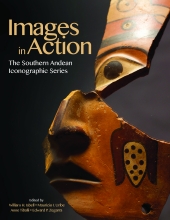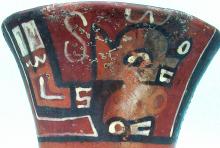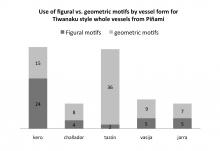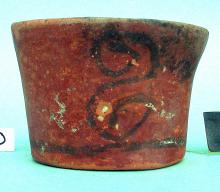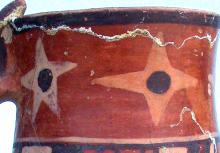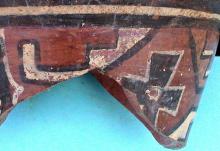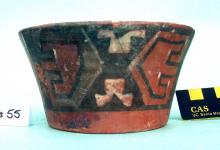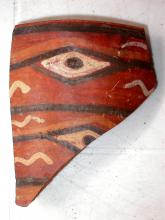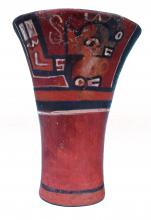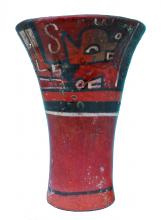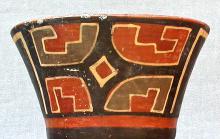Visual database
(d) CVCT variations of zoomorphic motifs showing abbreviated or mixed animal motifs. All vessels from Piñami.
Comparison, by vessel form, of figural vs. geometric central motifs. All examples are from whole vessels (n = 115) from Piñami.
Examples of CVCT motifs from Piñami considered diagnostic of "Cochabamba-Tiwanaku" (Janusek 2003:75; Fig 3.69). (a) Inverted scroll.
Examples of CVCT motifs from Piñami considered diagnostic of "Cochabamba-Tiwanaku" (Janusek 2003:75; Figure 3.69). (b) Star/eclipse.
Examples of CVCT motifs from Piñami considered diagnostic of "Cochabamba-Tiwanaku" (Janusek 2003:75; Figure 3.69). (c) Dotted cross.
Examples of CVCT motifs from Piñami considered diagnostic of "Cochabamba-Tiwanaku" (Janusek 2003:75; Figure 3.69). (d) Half cross.
Examples of CVCT motifs from Piñami considered diagnostic of "Cochabamba-Tiwanaku" (Janusek 2003:75; Figure 3.69): (e) diamond (snake).
CVCT symmetry patterns. (a1) Example of the most common CVCT symmetry pattern for major motif repetition: translation along a horizontal axis with no color counterchange between repetitions. All vessels from Piñami.
CVCT symmetry patterns. (a2) Example of the most common CVCT symmetry pattern for major motif repetition: translation along a horizontal axis with no color counterchange between repetitions. All vessels from Piñami.
CVCT symmetry patterns. (b) Example of CVCT vessels with more complex symmetry patterns, including color counterchange, rotation, and reflection. All vessels from Piñami.
